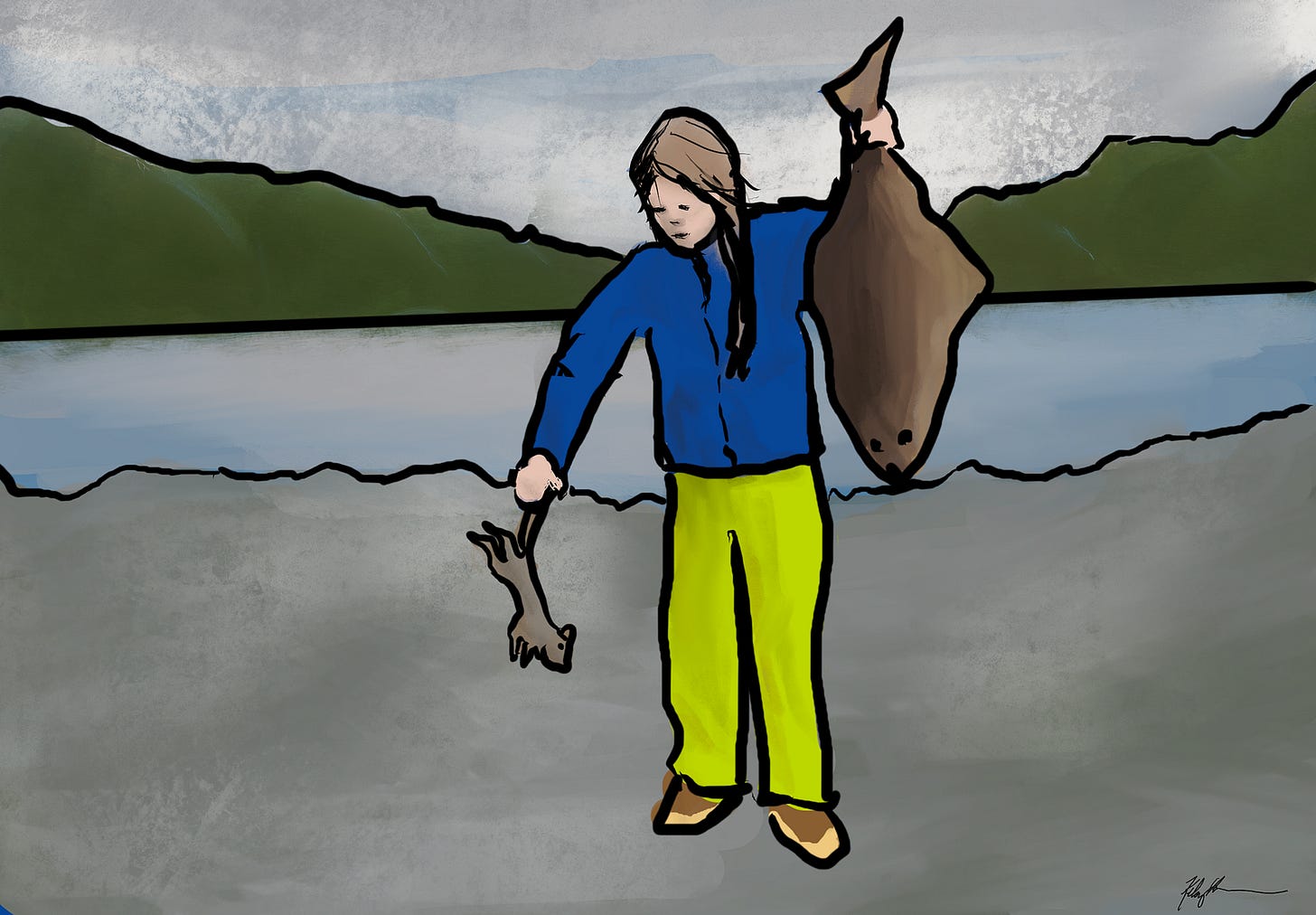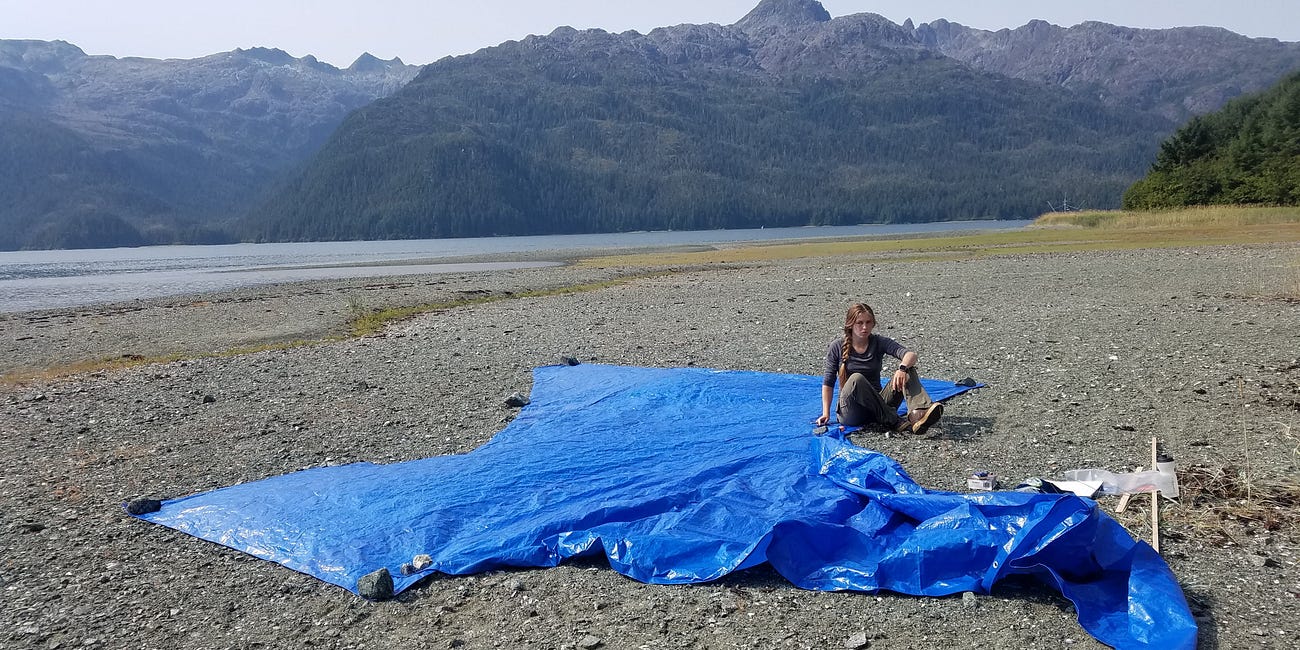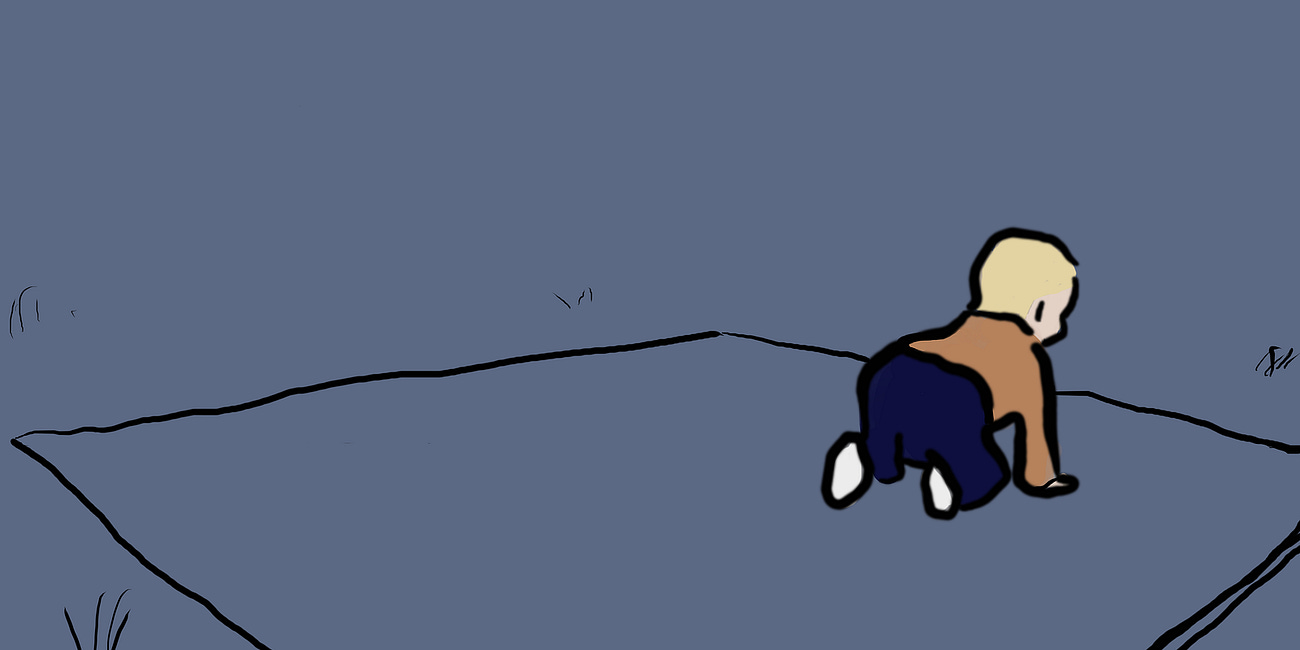The Work of Killing
A visceral heritage of eating animals
Note: this post contains graphic descriptions.
Did you know that a halibut’s heart continues to beat long after it’s been removed from the body? There it sits on the cutting table, a pulsing red pyramid the length of my thumb.
They’re resilient, these bottom-feeding giants.
My father says that sometimes a fishing boat would catch a two-hundred-pounder, ice it overnight in the boat’s hold, bring it in to be gutted, bled, and flipped up onto the freezer slab — and it could still flop so hard it would fall off the shelf.
Unless you’ve killed your own meat, you might not know the shivering strangeness of the twitching dead: the electrical system outlasts life itself.
I didn’t grow up killing animals. The first time I was asked to, I was ten: a boat on the Alsek River, thick gloves of orange rubber on my hands. My Tlingit grandma had passed down gillnetting rights, and my aunt had little patience for my squeamishness.
“Pop the gill,” she told me. For the net-tangled salmon, that meant a quick death — but my heart and fingers were both too soft for the job.
My dad, by ten, would have been hunting birds and helping with deer in autumn, fish in summer. That’s the difference one generation can make: he grew up in a log house in the Territory of Alaska. I grew up just outside Seattle’s suburbs, where food comes from the grocery store.
I started coming to my dad’s hometown when I was seventeen, and I’m there every summer. It’s not that we must hunt, or die — but it’s practical to live closer to my ancestors’ rhythms. The ferry only comes once a month, and we don’t have a fridge. We know when the berries are ripe, when the salmon are running, and which tidal greens are sweet. Over time, I’ve gotten better at killing what I eat.
My dad used to work the slime line at the cold storage, but I’m not too bad with a fish knife by now. He and I have caught three halibut this morning: at twenty pounds each, enough to share in town.
Each halibut has four fillets: the guts are small, so there’s a good chunk of meat in each of its quadrants.
“Don’t forget the gonads,” my dad tells me, ripping the triangular testicles out from a pocket where they hide, separate from the rest of the guts.
He makes the fletching cuts through the thick skin; I scrape clots of blood from along the spine with a spoon.
Most of the fish, we’ll bring to my aunt. She feeds half the town, and they thank her by leaving fresh catch in the “magic fish box” cooler she keeps outside. It’s a gift economy here — again, both tradition and practicality. Fishing and hunting are feast and famine; giving helps us pool our luck.
We bring my aunt fresh alder to smoke the salmon, buckets of spruce tips and beach greens—but we’re usually on the receiving side of her generosity. We sit on her couch to recharge phones, borrow a hot shower, grab Internet from her Starlink. And very often, we walk away with a whole raw salmon or a pan of halibut enchiladas to take home. It’s nice to have fish to bring, this time around.
Animals are surprisingly tidy on the inside. Fish, deer, squirrel—if you slice open the belly so the skin parts, the organs are all laid out in careful packages. The intestines are slippery tubes all nested together. The liver is large and soft. There’s a little green one — the gallbladder.
Mammalian skin is self-contained too. Once you have a grip on it, it’s easiest to just pull the skin with your fingers. Likewise, once you’ve parted fillet from spine, you can slide a knife between fish flesh and skin, and the fat will help it slide off clean.
I don’t mind the butchering, but I haven’t actually killed a land animal myself—not yet.
We’re sitting on my aunt’s couch when I mention a feud with the squirrels. Last year, a squirrel family had made a nest of the mattress I planned to use. This year, we’ve replaced the mattress, but the gas line has been chewed through.
“Well, shoot ‘em,” my aunt all but rolls her eyes. “Too many dang squirrels over there.”
My aunt points, and there is an air rifle beside the door.
“You can take that.” she tells me.
Accidentally committed, I pick it up. My aunt finds a little gum-sized tin of pellets, shows me how to lever the barrel down and load the chamber.
I don’t see any squirrels for several days after I bring the gun home. But then one afternoon, I spot one eating a hemlock cone, twenty feet up a tree.
I look down at my hands: full of laundry needing rinsing.
I’m going to finish my task, I decide. But if it’s still there after, I promise myself…
I don’t hurry. But after I’ve rinsed and wrung the clothes and started back to the cabin, the squirrel sits in exactly the same place.
I take my time hanging clothes on the clothesline. Casually, I retrieve the rifle, linger on the porch to make sure it’s loaded. I saunter back, giving the squirrel plenty of time to finish its snack—but somehow, it’s still there.
No excuses, really.
I hold the rifle butt tight to my shoulder, look through the sight. Aim for the very center of the eye. Slowly, heart in my throat, I pull the trigger.
The squirrel falls.
It runs when it hits the ground.
“I’m sorry, I’m sorry,” I whisper to the twitching creature as it scrambles sightlessly across the forest floor.
Nerves, of course, stay active even after life has flown. But that’s not how it feels to watch an animal die.
I walk a few steps, willing the creature not to scurry, bleeding, into the underbrush.
At last, it stills.
The warm, lifeless body is beautiful. I know the corpse will soon be stiff, but for now the gray-brown fur is butter-soft on a frame that still feels alive. The shot was clean: right through the eye. My remorse colors with relief.
This is, after all, what I meant to do.
Out of respect, I feel compelled to gut and skin it. To tan this beautiful hide. To eat the muscle. So I pull the knife from my pocket and walk to the fish gutting table. Best to do this while it’s fresh, while the joints still articulate.
The first kill is a band around your heart: pride and pathos forming a pulsing ring. I’m sorry it died. Thank god I didn’t miss.
My unpracticed hands are clumsy with novelty: nicking the skin, missing a bit of meat. Each little error is felt keenly: I killed for this.
At the end, how can you help but use all of it? The skin of the squirrel, staked on a bit of cardboard; the bones boiled into broth for the beans.
At home, I still buy meat at the grocery store. The practicalities reverse. But the relationship with food is hardly the same.
When I buy meat at the store, I am seeking “enough” — enough for my household. Enough for dinner. It’s transactional and neat. But hunting and fishing bring a kind of plenty that verges on “too much”: The labor. The emotion.
The abundance: too much fish for our fridge-less cabin. And how can you not share in the plenty?
Each one was a life: asked for, taken.
I am not someone who prays, but this dismemberment is a reverence all the same: to honor the creature. To handle it well. To make the bits that were them into ourselves, and make them part of us.
Previous: The Sailboat Project: Lessons in Grace | Next: Crawling Towards Autonomy
The Sailboat Project: Lessons in Grace
“What’s this?” Robert asks, opening a shoebox that’s been stashed away under the stairs.
Crawling Towards Autonomy
I am boring the baby. He’s sitting on the kitchen table, playing with container lids. Or rather, I’m trying to get him to play. His alert little face is seeking novelty elsewhere.





As always, beyond moving.